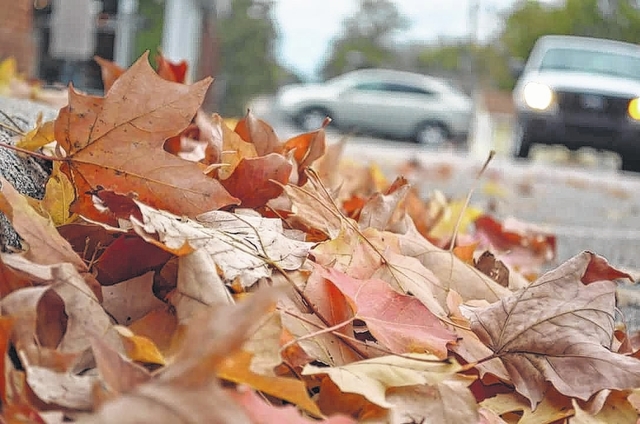Autumn is a favorite time of year for many people. Cooler temperatures are very welcome after sweltering, oppressive summer heat, and the season often triggers nostalgia for Friday night football, and excitement for Halloween and Thanksgiving, sweater weather and pumpkin spice in everything from coffee to sausage (I’ve seen it, it’s a real thing).
Of course, one of the primary attractions of fall is the changing color on deciduous trees. Here in the Sandhills, where pines prevail, fall leaf color is not the attraction it is in the mountains, but we do get good color in our native hardwoods. Red maples turn brilliant orange and yellow, dogwoods golden, and Sweetgum, Tulip Poplar and Sourwood trees put on a show as well. Ornamental trees such as crape myrtles can also provide good color in the landscape.
You will often hear leaf prognosticators, as early as August, predicting the fall foliage show as one that will be great or not-so-great. This is more than just a pretext to encourage bed and breakfast reservations in mountain resort towns: weather during the summer plays an important role in determining showiness of fall foliage.
Leaves are “triggered” to change color by a number of factors, including shortening day length, cooling temperatures (especially at night) and drought. Too much drought stress may cause trees to start the fall show early, and wrap up fast, with a predominance of orange and yellow foliage.
However, some dryness in the fall is good, as it allows the leaves to hang on longer. Warm, sunny days and cool nights makes for a greater show of reds in the leaves.
Autumn leaf color is caused when chlorophyll, the green pigment in leaves important for photosynthesis, degrades, allowing other pigments to be revealed. Orange and yellows are the result of carotenoids, the same pigment in carrots and sweet potatoes that gives them their distinctive color.
The presence of anthocyanins results in reds and purples in leaves as well as the blue in blueberries. In many tree species, anthocyanins are more prevalent in leaves in the fall, as a result of high sugar levels in the leaf from a season of food production.
The degradation of chlorophyll begins the process enabling the tree to scavenge the remaining nutrients in leaves prior to their dropping off, so no vital nutrients are wasted.
Dropping leaves is a way for deciduous trees to protect themselves from the harshness of winter. Leaves transpire a great deal of water; by dropping their leaves, it’s as if the tree is shuttering the windows and hunkering down to get through snow and freezing temperatures.
On the other hand, evergreen species, especially conifers and junipers, have modified leaves that are narrow, often with a waxy coating, that helps prevent water loss during the winter and protects plant cells from freezing temperatures.
Fall is a great time to get outdoors with the family and enjoy hikes in the brisk cool weather, and leaf watching is a great excuse. The fall show begins at the highest elevations in the North Carolina mountains in early October, progressing across the state to the eastern portion.
To get ideas on where to go, visit www.visitnc.com. The website provides tips on fall foliage getaways across the state.
Closer to home, N.C. Highway 73 from Ellerbe to Mount Gilead is designated an N.C. Scenic Byway and is a good substitute if you can’t get to the mountains. It is the perfect Sunday afternoon drive.
Wherever you go, enjoy the fall outdoors. The persimmon seed says it’s going to be a snowy winter!
Paige Burns is assistant horticulture agent for the N.C. Cooperative Extension’s Richmond County Center.


